History
 While I knew that the Louvre was not always a museum, since it was built in the 1500s, and no museums existed then, I never would have guessed that at one time it was a palace. I’m not sure why, it just didn’t occur to me. The construction of the Louvre palace was begun by King Francis I in 1546 on the site of a 12th-century fortress built by King Philip II. King Francis was a great art collector, and the Louvre was to serve as his royal residence. What better place to eventually become a museum than the castle of an art collector.
While I knew that the Louvre was not always a museum, since it was built in the 1500s, and no museums existed then, I never would have guessed that at one time it was a palace. I’m not sure why, it just didn’t occur to me. The construction of the Louvre palace was begun by King Francis I in 1546 on the site of a 12th-century fortress built by King Philip II. King Francis was a great art collector, and the Louvre was to serve as his royal residence. What better place to eventually become a museum than the castle of an art collector.
The work, which was supervised by the architect Pierre Lescot, continued after Francis’ death and into the reigns of kings Henry II and Charles IX. It seems that every successive king wanted to change things or add things to make it their own. Almost every subsequent French monarch extended the Louvre and its grounds, but major additions were made by Louis XIII and Louis XIV in the 17th century. Not only did these kings make major additions, but they also greatly expanded the crown’s art holdings, and Louis XIV acquired the art collection of Charles I of England after his execution in the English Civil War. Then, in 1682, Louis XIV moved his court to Versailles. That was the end of  the Louvre’s time as the main royal residence, but it would not be closed up and locked away forever.
the Louvre’s time as the main royal residence, but it would not be closed up and locked away forever.
In the spirit of the Enlightenment, many in France began calling for the public display of the royal collections, believing that it would be a shame not do display them, and that they belonged to the commonwealth of France. The French writer and philosopher, Denis Diderot, was among the first to propose a national art museum for the public. In 1750 King Louis XV temporarily displayed a selection of paintings at the Luxembourg Palace, but it was not until the outbreak of the French Revolution in 1789 that any real progress was made in establishing a permanent museum. The French Revolutionary Government turned the Louvre into a public museum in Paris on August 10, 1793, calling it the Musée Central des Arts in the Grande Galerie of the Louvre. After more than two centuries as a royal palace, seen only by royalty and guests. With artwork and artifacts representative of 11,000 years of human civilization and culture, the art collection housed in the Louvre is one of the richest in the world.
The French army seized art and archaeological items from territory and nations conquered in the Revolutionary and Napoleonic wars, and the collection at the Louvre grew rapidly. Much of this plundered art was returned after Napoleon’s defeat in 1815, however the Louvre’s current Egyptian antiquities collections and other departments owe much to Napoleon’s conquests as well. Two new wings were added in the 19th century. The  Louvre complex was completed in 1857, during the reign of Napoleon III.
Louvre complex was completed in 1857, during the reign of Napoleon III.
The Grand Louvre, as the museum is officially known, underwent major remodeling in the 1980s and 1990s. Modern museum amenities were added and thousands of square meters of new exhibition space were opened. The Chinese American architect I M Pei built a steel-and-glass pyramid in the center of the Napoleon courtyard. Traditionalists were outraged. In 1993, the 200th anniversary of the museum, a rebuilt wing formerly occupied by the French ministry of finance opened to the public, and for the first time the entire Louvre was used for museum purposes.
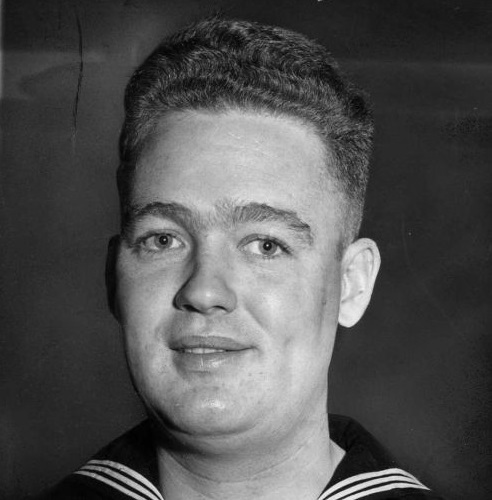

 Adolf Hitler was always trying to find a way to infiltrate the nations of the world, because his ultimate goal was to control the world. Most of us would think that he was mostly active in the nations around Germany, and that might be a correct statement, but Hitler also had his sights on the United States. In 1942, Hitler ordered the defense branch of the German Military Intelligence Corps initiated a program to infiltrate the United States and destroy industrial plants, bridges, railroads, waterworks, and Jewish-owned department stores. His ultimate plan was to sabotage all of these, thereby shackling the United States so they would not be an effective enemy in World War II.
Adolf Hitler was always trying to find a way to infiltrate the nations of the world, because his ultimate goal was to control the world. Most of us would think that he was mostly active in the nations around Germany, and that might be a correct statement, but Hitler also had his sights on the United States. In 1942, Hitler ordered the defense branch of the German Military Intelligence Corps initiated a program to infiltrate the United States and destroy industrial plants, bridges, railroads, waterworks, and Jewish-owned department stores. His ultimate plan was to sabotage all of these, thereby shackling the United States so they would not be an effective enemy in World War II.
The Nazis hoped that their sabotage teams would be able to slip into America at the rate of one or two every six weeks…going unnoticed as simple illegal aliens. The first two teams, made up of eight Germans who had all lived in the United States before the war, departed the German submarine base at Lorient, France, in late May. On a heavily foggy June 12, 1942, just before midnight, a German submarine reached the American coast off Amagansett, Long Island. A team was deployed, rowing to the shore in an inflatable boat. Just as the Germans finished burying their explosives in the sand, John C Cullen, a young US Coast Guardsman, came upon them during his regular patrol of the beach. The leader of the team, George Dasch, bribed the suspicious Cullen, and he accepted the money, promising to keep quiet.
At first I found myself feeling angry at the “traitor” John C Cullen, who had sold out his country by accepting a bribe, but then I found out that Cullen was not only not a traitor, but he was a hero and a patriot in every way. As soon as Cullen passed safely back into the fog, he ran two miles back to the Coast Guard station and informed his superiors of his discovery. After retrieving the German supplies from the beach, the Coast Guard called the FBI, which launched a massive manhunt for the saboteurs, who had fled to New York City.
The saboteurs, Dasch and Ernest Burger, were unaware that the FBI was looking for them, but they decided to turn themselves in and betray their colleagues. It might have been because they were afraid they would be captured after the botched landing. On July 15, Dasch called the FBI in New York, but incredibly they failed to take his claims seriously. Dasch decided to travel to FBI headquarters in Washington DC. On July 18, the same day that a second four-man team successfully landed at Ponte Vedra Beach, Florida, Dasch turned himself in. He agreed to help the FBI capture the rest of the saboteurs.
With Dasch’s help, Burger and the rest of the Long Island team were picked up by July 22, 1942 and by July 27, 1942 the whole of the Florida team was arrested. To preserve wartime secrecy, President Franklin D Roosevelt ordered a special military tribunal consisting of seven generals to try the saboteurs. At the end of July, Dasch was sentenced to 30 years in prison, Burger was sentenced to hard labor for life, and the other six Germans were sentenced to die. The six condemned saboteurs were executed by electric chair in Washington 
 DC, on August 8, 1942. The situation was handled so quickly, that it is almost shocking to me. Two more German spies were caught after a landing in Maine in 1944. No other instances of German sabotage within wartime America has come to light. We assume that there were no others, but I don’t suppose we will ever know for sure. Nevertheless, no sabotages were ever carried out during that time.
DC, on August 8, 1942. The situation was handled so quickly, that it is almost shocking to me. Two more German spies were caught after a landing in Maine in 1944. No other instances of German sabotage within wartime America has come to light. We assume that there were no others, but I don’t suppose we will ever know for sure. Nevertheless, no sabotages were ever carried out during that time.
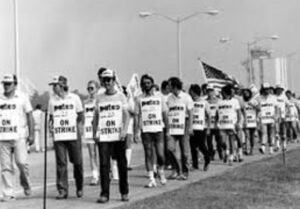 There are some jobs from which people really cannot strike. To many lives are at stake. One such job is that of air-traffic controllers, nevertheless, on August 3, 1981, almost 13,000 air-traffic controllers went on strike after negotiations with the federal government designed to raise air-traffic controller pay and shorten their workweek failed. In the complaint, the controllers sited difficult working conditions and a lack of recognition of the pressures they face as major issues they were facing. When the strike began, some 7,000 flights across the country, had to be canceled. It was a major disaster in the United States. Air travel was a vital part of American life.
There are some jobs from which people really cannot strike. To many lives are at stake. One such job is that of air-traffic controllers, nevertheless, on August 3, 1981, almost 13,000 air-traffic controllers went on strike after negotiations with the federal government designed to raise air-traffic controller pay and shorten their workweek failed. In the complaint, the controllers sited difficult working conditions and a lack of recognition of the pressures they face as major issues they were facing. When the strike began, some 7,000 flights across the country, had to be canceled. It was a major disaster in the United States. Air travel was a vital part of American life.
President Reagan immediately called the strike illegal and stated that he  would fire any controller who had not returned to work within 48 hours. Robert Poli who was the president of the Professional Air-Traffic Controllers Association (PATCO) at that time, was found in contempt by a federal judge and ordered to pay $1,000 a day in fines. The air-traffic controllers still had not returned to work on August 5, 1981, so President Ronald Reagan began firing 11,359 air-traffic controllers striking in violation of his order for them to return to work. The executive action was regarded as extreme by many and significantly slowed air travel for months. Nevertheless, President Reagan did what he needed to do. There are certain occupations that require continued, loyal work, even during a dispute.
would fire any controller who had not returned to work within 48 hours. Robert Poli who was the president of the Professional Air-Traffic Controllers Association (PATCO) at that time, was found in contempt by a federal judge and ordered to pay $1,000 a day in fines. The air-traffic controllers still had not returned to work on August 5, 1981, so President Ronald Reagan began firing 11,359 air-traffic controllers striking in violation of his order for them to return to work. The executive action was regarded as extreme by many and significantly slowed air travel for months. Nevertheless, President Reagan did what he needed to do. There are certain occupations that require continued, loyal work, even during a dispute.
.
An angry President Reagan carried out his threat that August day, and the federal government began firing the  11,359 air-traffic controllers who had not returned to work. In addition, he declared a lifetime ban on the rehiring of the strikers by the Federal Aviation Administration (FAA). They made their choice and our president made good on the repercussions, and they got no second changes. Air travel slowed to a crawl, but on August 17, the FAA began accepting applications for new air-traffic controllers, and on October 22 the Federal Labor Relations Authority decertified PATCO. These new air-traffic controllers needed to know just how important their job was and that even in a dispute, they went to work. To my knowledge, a strike of the air-traffic controllers has never happened again.
11,359 air-traffic controllers who had not returned to work. In addition, he declared a lifetime ban on the rehiring of the strikers by the Federal Aviation Administration (FAA). They made their choice and our president made good on the repercussions, and they got no second changes. Air travel slowed to a crawl, but on August 17, the FAA began accepting applications for new air-traffic controllers, and on October 22 the Federal Labor Relations Authority decertified PATCO. These new air-traffic controllers needed to know just how important their job was and that even in a dispute, they went to work. To my knowledge, a strike of the air-traffic controllers has never happened again.
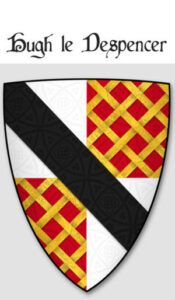 For many years, I thought my Spencer line came from England, but some things didn’t quite add up. When I started seeing DeSpencer and Le DeSpencer, I suspected that we might have immigrated to England from France, which my DNA proved to be correct. I’m more French than English. Nevertheless, for centuries, my Spencer ancestors did live in England, married English people, and so the line blended into more English blood in the current Spencers.
For many years, I thought my Spencer line came from England, but some things didn’t quite add up. When I started seeing DeSpencer and Le DeSpencer, I suspected that we might have immigrated to England from France, which my DNA proved to be correct. I’m more French than English. Nevertheless, for centuries, my Spencer ancestors did live in England, married English people, and so the line blended into more English blood in the current Spencers.
One Hugh le DeSpencer, who was the 1st Baron le DeSpencer, whose connection to me, while most assuredly there, would have to be researched to determine the level of cousinship, or whatever other relationship it is; was an important ally of Simon de Montfort during the reign of Henry III. He served briefly as Justiciar of England in 1260. In the “Middle Ages in England and Scotland the Chief Justiciar was roughly equivalent to a modern Prime Minister of the United Kingdom as the monarch’s chief minister.” Baron le DeSpencer also served as Constable of the Tower of London. “The Constable of the Tower is the most senior appointment at the Tower of London. In the  Middle Ages a constable was the person in charge of a castle when the owner…the king or a nobleman…was not in residence. The Constable of the Tower had a unique importance as the person in charge of the principal fortress defending the capital city of England.”
Middle Ages a constable was the person in charge of a castle when the owner…the king or a nobleman…was not in residence. The Constable of the Tower had a unique importance as the person in charge of the principal fortress defending the capital city of England.”
As chief justiciar of England, Hugh Le DeSpencer, first played an important part in 1258, when he was prominent on the baronial side in the Mad Parliament of Oxford, so called because they apparently argued a lot… and because of a possible misspelling of the word insigne as insane in whatever this says…”Hoc anno fuit illud insane parliamentum apud Oxoniam.” In 1260 the barons chose Le DeSpencer to succeed Hugh Bigod as Justiciar, and in 1263 the king was further compelled to put the Tower of London in his hands. He was the son  of Hugh le DeSpencer I, born in about 1223 and was summoned to Parliament by Simon de Montfort. Hugh was summoned as Lord DeSpencer on December 14, 1264 and was Chief Justiciar of England and a leader of the baronial party, and so might be deemed a baron, although that may not have been completely legal.
of Hugh le DeSpencer I, born in about 1223 and was summoned to Parliament by Simon de Montfort. Hugh was summoned as Lord DeSpencer on December 14, 1264 and was Chief Justiciar of England and a leader of the baronial party, and so might be deemed a baron, although that may not have been completely legal.
He remained allied with Montfort to the end, and was present at the Battle of Lewes. He was killed fighting on de Montfort’s side at the Battle of Evesham in August 4, 1265. He was slain by Roger Mortimer, 1st Baron Wigmore. That killing caused a feud to begin between the DeSpencer and the Mortimer families.
 In years gone by the average person couldn’t afford many books, if any books. All books were hardback, and expensive to purchase. Most people had to make due with checking out a book from the library. taking a book with you to read on a train wasn’t feasible either. They were heavy, large, and bulky. Now, most people wouldn’t think of a waddling, surprised-looking bird would be on the list of working-class heroes…if there is such a thing, but somewhere in the world of books, it is a penguin that changed the lives of many…at that time anyway. The penguin still stares out blankly from the covers of Penguin books published today. Change is constant, and today, many people again don’t won books, because everything is going digital…but that is a story for another day.
In years gone by the average person couldn’t afford many books, if any books. All books were hardback, and expensive to purchase. Most people had to make due with checking out a book from the library. taking a book with you to read on a train wasn’t feasible either. They were heavy, large, and bulky. Now, most people wouldn’t think of a waddling, surprised-looking bird would be on the list of working-class heroes…if there is such a thing, but somewhere in the world of books, it is a penguin that changed the lives of many…at that time anyway. The penguin still stares out blankly from the covers of Penguin books published today. Change is constant, and today, many people again don’t won books, because everything is going digital…but that is a story for another day.
The story of Penguin Paperback Books is an interesting one. A man names Allen Lane was at the Exeter Railway Station heading home after having spent the weekend interviewing one Agatha Christie. As he prepared to board his train, he was looking around for something inexpensive to read on the ride home. There was simply nothing  to be found…except reprints of Victorian novels and magazines. Lane was unimpressed, and he decided that the world needed a change. I’m not sure how the publishing companies felt about his plan, but then again, how well could their businesses be faring, if no one could afford their books.
to be found…except reprints of Victorian novels and magazines. Lane was unimpressed, and he decided that the world needed a change. I’m not sure how the publishing companies felt about his plan, but then again, how well could their businesses be faring, if no one could afford their books.
Once he was back in London, Lane decided to set up a company selling contemporary fiction cheaply. He had some ideas, and wanted a logo that was “dignified but flippant.” His secretary suggested a penguin. An employee was dispatched to the London Zoo, sketch pad in had, to draw a penguin. I don’t know if I think a penguin is “dignified,” but the idea seemed to serve the purpose it was intended to, and on July 30, 1935, the first books bearing the  ubiquitous penguin were published. The design was color coded, with orange for fiction, blue for biography, and green for crime. Each book cost sixpence, or $10.00 US. That seems like a lot of money for the time, considering that they sell for about that today, many years later. Still, there was the novelty of it all to consider. Leading the rollout were names like Ernest Hemingway, Andre Marois, and Agatha Christie (who may have inspired the idea in the first place).
ubiquitous penguin were published. The design was color coded, with orange for fiction, blue for biography, and green for crime. Each book cost sixpence, or $10.00 US. That seems like a lot of money for the time, considering that they sell for about that today, many years later. Still, there was the novelty of it all to consider. Leading the rollout were names like Ernest Hemingway, Andre Marois, and Agatha Christie (who may have inspired the idea in the first place).
Traditional publishers turned up their noses at the popular paperback revolution, but that didn’t stop Penguin selling millions of books to avid readers of A Farewell to Arms and The Mysterious Affair at Styles in its first years. I suppose they thought their sales would be hurt by these “disposable” versions of their great books. I wonder what they would think of the Kindle versions and the Audible versions. I would imagine they would really be cringing, but change really is the only constant.

 Millions of people visit Niagara Falls each year. It is a beautiful sight, and one you will never forget once you’ve seen it. The boats that take you close to the bottom of the falls guarantee a “rainy” ride. It all seems so safe…right? Well, maybe not always. On July 28, 1954, a huge section of Prospect Point observation area at the brink of the American Falls, collapsed in a pie shaped section. It’s something you would never expect, and yet when you think about it, erosion can happen when you mix water and dirt or rock. Combine that with Winter’s ice, and you get expansion. Now, when you think about it, can you see how the collapse might have happened, because I certainly can?
Millions of people visit Niagara Falls each year. It is a beautiful sight, and one you will never forget once you’ve seen it. The boats that take you close to the bottom of the falls guarantee a “rainy” ride. It all seems so safe…right? Well, maybe not always. On July 28, 1954, a huge section of Prospect Point observation area at the brink of the American Falls, collapsed in a pie shaped section. It’s something you would never expect, and yet when you think about it, erosion can happen when you mix water and dirt or rock. Combine that with Winter’s ice, and you get expansion. Now, when you think about it, can you see how the collapse might have happened, because I certainly can?
The collapse, when it came sent an estimated 185,000 tons of rock thundering into the Niagara River Gorge. Park officials worried that additional sections of Prospect Point would collapse before blasting operations could begin. Following the collapse, engineers and geologists conducted surveys to determine whether blasting would be necessary to stall further rock falls into the gorge. Two sections of Prospect Point were hanging precariously over the 170 foot gorge. Officials estimated that a new fall could send an additional 50,000 tons of rock into the gorge. Engineers appeared to be at a loss as to what to do about the huge pile of rocks now at the bottom of the gorge, as well. A few have said the view from the base of the American Falls has been marred by the mass of rock now laying at the base of the falls. They weren’t even sure if the elevator to the Maid of the Mist landing at the base of the American Falls could be re-opened.
For the sake of safety, Park officials temporarily erected a fence around the collapsed area to keep the curious bystanders away. Thousands of tourists were there that day. They witnessed the huge masses of rock tumbling into the gorge. It was the worst rock fall at Niagara Falls since January 17, 1931 when a huge section of the American Falls tumbled into the gorge. Engineers from the Niagara Frontier State Parks Commission estimate the size of the rock fall as 400 feet long from the lip of the gorge…50 feet wide and 150 feet deep. This included an estimated 20 feet off the Falls crest-line crashed to a point 70 feet down the face.
After the collapse, three giant boulders were silhouetted against the red and blue mist of the Niagara Falls night display. The boulders, some as huge as houses, lay in a jumbled mess beneath the rocks from which they had fallen. Because of the mist, it was hard to see the new scar on Niagara’s face from the lower river. The north face of the American Falls, however, now introduced a raw and torn face to the Canadian side. There would necessarily be some repairs. A face lift would be needed for the new observation area according to Andrew M. Anderson, Executive Secretary and Chief Engineer for the Niagara Frontier State Parks Commission. He also indicated that the new face would be smoothed off by engineers. A new sidewalk and guard rails would be constructed once the area was proven to be safe.
The elevator shaft and tunnel to the Maid of the Mist landing below the Falls although cracked, appeared to be in no danger according to maintenance workers. Cracks in the shaft and tunnel appeared only yesterday 
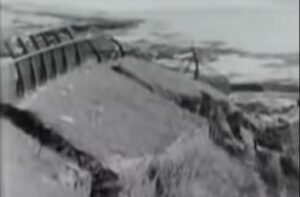 showed no signs of widening when checked last night. Water which had gushed from the crack earlier in the day had dwindled to just a trickle. Geologists examined the building that day and it reopened as soon as it was declared safe. Because so many were able to get pictures and videos of the collapse, some people even thought it was a publicity stunt.
showed no signs of widening when checked last night. Water which had gushed from the crack earlier in the day had dwindled to just a trickle. Geologists examined the building that day and it reopened as soon as it was declared safe. Because so many were able to get pictures and videos of the collapse, some people even thought it was a publicity stunt.
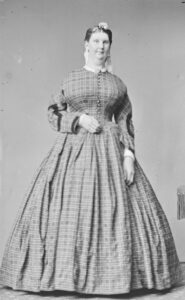
 Whether you prefer tall people or short people, you can’t help but be interested in the very tall or the very short. When I think of tall, I think of over 6’5”, but some people think of someone over 7’ tall. I suppose many people think that’s not so tall, but when you’re 5’2” tall, 6’5” seems very tall, and 7’ is a giant. The tallest person in recorded history was Robert Pershing Wadlow, also known as the Alton Giant and the Giant of Illinois. He was an American man who was irrefutably the tallest person in recorded history, and of that there is irrefutable evidence. He was born and raised in Alton, Illinois, a small city near Saint Louis, Missouri. Nevertheless, he did not marry the tallest woman. The tallest married couple ever recorded was Anna Haining Swan, who was 7’11” tall and Martin Van Buren Bates, who was 7’9” tall. The pictures of their wedding show people attending the wedding, who were probably quite tall, but they looked very short next to the Bates couple.
Whether you prefer tall people or short people, you can’t help but be interested in the very tall or the very short. When I think of tall, I think of over 6’5”, but some people think of someone over 7’ tall. I suppose many people think that’s not so tall, but when you’re 5’2” tall, 6’5” seems very tall, and 7’ is a giant. The tallest person in recorded history was Robert Pershing Wadlow, also known as the Alton Giant and the Giant of Illinois. He was an American man who was irrefutably the tallest person in recorded history, and of that there is irrefutable evidence. He was born and raised in Alton, Illinois, a small city near Saint Louis, Missouri. Nevertheless, he did not marry the tallest woman. The tallest married couple ever recorded was Anna Haining Swan, who was 7’11” tall and Martin Van Buren Bates, who was 7’9” tall. The pictures of their wedding show people attending the wedding, who were probably quite tall, but they looked very short next to the Bates couple.
It is believed that Anna Swan was born at Mill Brook, New Annan, Nova Scotia. At birth she weighed 16 pounds, which is a large baby. She was the third of 13 children, but all of the others were average height. Anna grew quite quickly, reaching 4’6″ by her fourth birthday. On her 6th birthday Anna was measured again. She stood 5′ 2″ tall, just an inch or two shorter than her mother. She stood 6′ 2″ tall and weighed 203 pounds on her 11th birthday. By her 15th birthday Bates was 7′ tall. She reached her full height of 7’11” three years later. Her feet measured 14.2 inches long.
Martin Van Buren Bates was born on November 9, 1837, and was known as the “Kentucky Giant.” By the time he as full grown, he was 7’9″ and weighing 380 pounds. Bates’ growth rate didn’t jump until the age of six or seven, but he was over 6′ tall and weighed over 200 pounds by the time he was twelve years old. He served in the Civil War, and returned to Kentucky after the war. Before the war, his first occupation was as a schoolteacher, but upon his return, he began travelling with a circus. When the circus was in Halifax Martin Van Buren Bates met another enormously tall person…Anna Swan. She was attending the circus, and was spotted by the management and hired on the spot. The giant couple became a touring sensation and eventually fell in love. They married on June 17, 1871, in Saint Martin-in-the-Fields in London, in a highly publicized wedding. The ceremony drew thousands of people, due to both the uncommonness of the spectacle and the good nature of the pair. Queen Victoria gave them two extra-large diamond-studded gold watches as wedding presents.
Martin and Anna moved to Ohio in 1872, settling in Seville. On May 19, 1872, Anna gave birth to a daughter, who weighed 18 pounds. She died at birth. The couple built a large house to accommodate themselves comfortably. Martin wanted to be a farmer. The family did well, but not in the area of children. A baby boy was 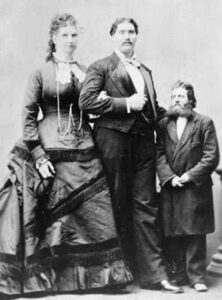
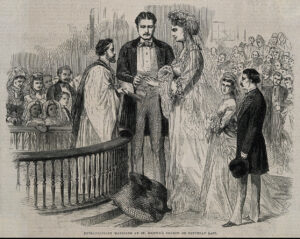 born on January 15, 1879. He weighed 23 pounds 9 ounces, and was 28′ long. He was posthumously awarded the world record according to the Guinness Book of World Records. Their son only lived 11 hours. Anna Bates died on August 5, 1888. Martin ordered a statue of her from Europe for her grave, sold the oversized house, and moved into the town. In 1889 he remarried, this time to a woman of normal stature, Annette LaVonne Weatherby and lived a mostly peaceful life until his death in 1919 of nephritis. He was buried beside his first wife and their son in Seville.
born on January 15, 1879. He weighed 23 pounds 9 ounces, and was 28′ long. He was posthumously awarded the world record according to the Guinness Book of World Records. Their son only lived 11 hours. Anna Bates died on August 5, 1888. Martin ordered a statue of her from Europe for her grave, sold the oversized house, and moved into the town. In 1889 he remarried, this time to a woman of normal stature, Annette LaVonne Weatherby and lived a mostly peaceful life until his death in 1919 of nephritis. He was buried beside his first wife and their son in Seville.
 James Edwin Wide had lost both his legs in a work accident years earlier, and so in 1880, when he came across a Chacma Baboon driving an oxcart while visiting a busy South African market, he saw a way to make his life easier. Wide was impressed with the skills, and so he decided to buy him. Having two peg-legs and working had been very difficult on Wide over the years, and finally he saw an end to years of hardship. Impressed by the primate’s skills, Wide bought him, named him Jack, and made him his pet and personal assistant. His original plan was to have Jack drive him on his half-mile commute to the train station. So the first thing he trained the Jack to do was push him to and from work in a small trolley. Soon, Jack was also helping with household chores, sweeping floors and taking out the trash. Jack was very good at his work, and he truly loved Wide, almost as if Wide was his child.
James Edwin Wide had lost both his legs in a work accident years earlier, and so in 1880, when he came across a Chacma Baboon driving an oxcart while visiting a busy South African market, he saw a way to make his life easier. Wide was impressed with the skills, and so he decided to buy him. Having two peg-legs and working had been very difficult on Wide over the years, and finally he saw an end to years of hardship. Impressed by the primate’s skills, Wide bought him, named him Jack, and made him his pet and personal assistant. His original plan was to have Jack drive him on his half-mile commute to the train station. So the first thing he trained the Jack to do was push him to and from work in a small trolley. Soon, Jack was also helping with household chores, sweeping floors and taking out the trash. Jack was very good at his work, and he truly loved Wide, almost as if Wide was his child.
While Jack was very good at his caregiving job, it was at the signal box Jack truly shined. The signal box was a system of manual switches operated in connection with the approaching trains whistles. As trains approached the  rail switches at the Uitenhage train station, they would toot their whistle a specific number of times to alert the signalman which tracks to change. By watching his owner, Jack picked up the pattern and started tugging on the levers himself. Jack was so smart. He was able to totally take over the signalman’s job that had been held by Wide. Soon, Wide was able to kick back and relax as his furry helper did all of the work switching the rails. According to The Railway Signal, Wide “trained the baboon to such perfection that he was able to sit in his cabin stuffing birds, etc, while the animal, which was chained up outside, pulled all the levers and points.”
rail switches at the Uitenhage train station, they would toot their whistle a specific number of times to alert the signalman which tracks to change. By watching his owner, Jack picked up the pattern and started tugging on the levers himself. Jack was so smart. He was able to totally take over the signalman’s job that had been held by Wide. Soon, Wide was able to kick back and relax as his furry helper did all of the work switching the rails. According to The Railway Signal, Wide “trained the baboon to such perfection that he was able to sit in his cabin stuffing birds, etc, while the animal, which was chained up outside, pulled all the levers and points.”
One day, as the story goes, an upper-class train passenger, looked out the window of the train and saw that a baboon, and not a human, was manning the gears. Of course, this brought outrage, and a complaint to the railway authorities. The authorities decided not to act in haste and fire Wide, decided to resolve the complaint by testing the baboon’s abilities. The result of that test was a group of astounded officials. “Jack knows the signal whistle as well as I do, also every one of the levers,” wrote railway superintendent George B Howe, who visited the baboon sometime around 1890. “It was very touching to see 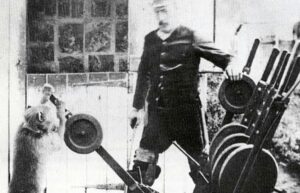 his fondness for his master. As I drew near they were both sitting on the trolley. The baboon’s arms round his master’s neck, the other stroking Wide’s face.”
his fondness for his master. As I drew near they were both sitting on the trolley. The baboon’s arms round his master’s neck, the other stroking Wide’s face.”
The complaint was disregarded and Jack was reportedly given an official employment number, and was paid 20 cents a day and half a bottle of beer weekly. Jack passed away in 1890, after developing tuberculosis. It was a sad day for all who knew him. Jack had worked the rails for nine years, without ever making a mistake. That shows that animals can be trained to do things in a responsible way, and do their job perfectly.

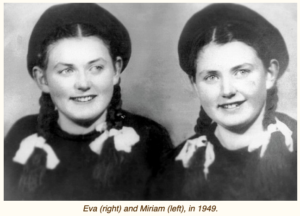 Approximately 3,000 twins were pulled from the masses on the ramp at Auschwitz, most of them were children; only around 160 of them survived. As the trains rolled into Auschwitz, the guards were trained to watch closely. They were looking for strong workers, the elderly, and the weak, and they were looking for twins…especially identical twins. The parents of these twins were thankful that they had twins…at first. They seemed to know that their twins would not be sent to the gas chambers, but they did not know that they would be taken away from them forever, and that they would be sentenced to a life of torture in the hands of a madman. The Nazis didn’t care about the feelings of the parents whose twins were yanked from their arms. They knew that Dr Josef Mengele wanted these twins for his medical experiments. Mengele wanted to find a way to cause more twin births to increase the Nazi world population. He also wanted to find a way to manipulate the traits twins had so that if they were blonde haired, a trait that supposedly meant that they were half Aryan. That said, he wanted to bring any problematic areas into line, such as the lack of blue eyes. He would inject chemicals into their eyes to try to turn their eyes blue. And that was just part of his insanely sadistic experimentation.
Approximately 3,000 twins were pulled from the masses on the ramp at Auschwitz, most of them were children; only around 160 of them survived. As the trains rolled into Auschwitz, the guards were trained to watch closely. They were looking for strong workers, the elderly, and the weak, and they were looking for twins…especially identical twins. The parents of these twins were thankful that they had twins…at first. They seemed to know that their twins would not be sent to the gas chambers, but they did not know that they would be taken away from them forever, and that they would be sentenced to a life of torture in the hands of a madman. The Nazis didn’t care about the feelings of the parents whose twins were yanked from their arms. They knew that Dr Josef Mengele wanted these twins for his medical experiments. Mengele wanted to find a way to cause more twin births to increase the Nazi world population. He also wanted to find a way to manipulate the traits twins had so that if they were blonde haired, a trait that supposedly meant that they were half Aryan. That said, he wanted to bring any problematic areas into line, such as the lack of blue eyes. He would inject chemicals into their eyes to try to turn their eyes blue. And that was just part of his insanely sadistic experimentation.
Ten-year-old Eva (Mozes) Kor and her twin sister, Miriam (Mozes) Zeiger, were one of these surviving sets of twins. The twins were born on January 31, 1934 into a Jewish farming family in the village of Portz in northern Transylvania, which was a part of Romania at the time, but later became a part of Hungary, which came under German military occupation in late World War II. Their family was deported to Auschwitz in late 1944, a fact which probably was to their advantage, because they were at Auschwitz for a shorted time that some survivors. The twins father, Alexander; their mother, Jaffa; and sisters, Edit and Aliz; all died at Auschwitz.
Eva and Miriam spent nine months in the clutches of Dr Mengele, during which time he would inject them with mystery cocktails of germs, viruses, and chemicals…just to see how they would react. Following one such injection, Miriam’s kidneys stopped growing. They remained the size of a child’s for the rest of her life. Eva recalls that after one injection, she became very ill, with a high fever. During her illness, she kept telling herself that she must survive, or else Miriam would become “surplus to requirements,” meaning that she would be given a lethal injection of something so that dual autopsies could be performed on them. Mengele wanted to see any differences the twins might have. The girls were determined that they would survive for each other.
Dr Mengele who has killed about 1,500 pairs of twins in two years, was known to perform horrible surgeries on twins, without anesthesia. One day the girls saw a set of twins brought into the barracks after surgery. The twins had been connected at their backs. Their organs had been interconnected. They were in horrible pain, and they died a short time later. While the “Mengele Twins” were given “special privileges” in some ways, better clothes and food, they were not spared the horrors of death. They saw it all around them, and they had no one to comfort them after they witnessed these horrors.
Then it happened…on January 27, 1945, while Eva and Miriam are lying in their bunks, the girls heard shouts of 
 “We’re free! We’re free!” They ran to the door of the barracks, but couldn’t see anything for a few minutes because of the snow. Then they saw the Soviet soldiers in white camouflage. It was a wonderful day for them. The girls immigrated to Israel and lived in a Kibbutz that had been set up for children orphaned by the Holocaust. The grew up and both married, but only Eva had children. Miriam passed away on June 6, 1993. Eva went on to forgive the Nazis for the atrocities against the Jews. She not only forgave them, but she took young people on annual tours of the Auschwitz complex, because she didn’t want people to forget what happened there. She actually passed away while on one of those tours on July 4, 2019. These were amazing women. Would that we could all forgive in such a manner.
“We’re free! We’re free!” They ran to the door of the barracks, but couldn’t see anything for a few minutes because of the snow. Then they saw the Soviet soldiers in white camouflage. It was a wonderful day for them. The girls immigrated to Israel and lived in a Kibbutz that had been set up for children orphaned by the Holocaust. The grew up and both married, but only Eva had children. Miriam passed away on June 6, 1993. Eva went on to forgive the Nazis for the atrocities against the Jews. She not only forgave them, but she took young people on annual tours of the Auschwitz complex, because she didn’t want people to forget what happened there. She actually passed away while on one of those tours on July 4, 2019. These were amazing women. Would that we could all forgive in such a manner.
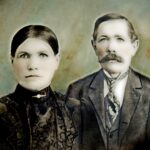
 My great grandparents, Carl and Henriette (Hensel) Schumacher were farmers, first in Minnesota and then in North Dakota, where they owned land in the famous Red River Valley. I had heard of the Red River Valley as a child, but only from the old song that bears it’s name. Recently, while preparing for a trip with three of my sisters; Cheryl Masterson, Caryl Reed, and Alena Stevens; to Wisconsin and deciding to go through Fargo, North Dakota to visit our great grandparents’ graves, I was reading through my great aunt Bertha (Schumacher) Hallgren’s journal to get more information, when I came across the fact that my great grandparents had actually lived in the Red River Valley when they moved to Fargo, North Dakota. For a farmer, to live in such a fertile area and not be able to farm the land must have been just awful.
My great grandparents, Carl and Henriette (Hensel) Schumacher were farmers, first in Minnesota and then in North Dakota, where they owned land in the famous Red River Valley. I had heard of the Red River Valley as a child, but only from the old song that bears it’s name. Recently, while preparing for a trip with three of my sisters; Cheryl Masterson, Caryl Reed, and Alena Stevens; to Wisconsin and deciding to go through Fargo, North Dakota to visit our great grandparents’ graves, I was reading through my great aunt Bertha (Schumacher) Hallgren’s journal to get more information, when I came across the fact that my great grandparents had actually lived in the Red River Valley when they moved to Fargo, North Dakota. For a farmer, to live in such a fertile area and not be able to farm the land must have been just awful.
They had farmed in the Lisbon, North Dakota area. Later they moved to Fargo, when Great Grandma became ill, and the family left the farm for good. For my great aunts, Mina (Schumacher) Spare and Elsa (Schumacher) Lawrence, the move to Fargo was a welcomed one. They never really loved the farming lifestyle, and they saw the move to Fargo as a definite “step up” in the world. For Bertha and Great Grandpa, it was one of the saddest moments in their lives. They loved the outdoors, farming, and especially the Red River Valley’s fertile ground. They would take walks in the spring, summer, and fall, walking two to three miles to the edge of town to look out on the fields of crops that grew in the Red River Valley. They always wished they could go back to farming, but Grandma needed to be in town and closer to medical care. It wasn’t just this illness that plagued her, but the fact that the last nineteen years of her life were spent in a wheelchair, that made the need for closeness to doctors and hospitals so important.
My guess is that both Great Grandpa and Great Aunt Bertha hoped that someday they might be able to move to the farmland of the Red River Valley, but I expect that they knew deep down inside that it was not to be. Great Grandpa was getting on in years, and grandma was never going to get well enough to move back to the country. The wheelchair was extremely limiting. Sadly, there was a medicine that came from Germany that was helping 
 Great Grandma, but it became unavailable during World War I, so the doctor did other drastic treatments…electric shock treatments and drawing up the cords in her knees, which rendered her wheelchair bound for the rest of her life. For Great Grandpa and Great Aunt Bertha, they were thankful that they could walk out to the edge of town and see the Red River Valley, but always sad that they could not walk those crop fields and dig in the fertile dirt there. They would always miss farming.
Great Grandma, but it became unavailable during World War I, so the doctor did other drastic treatments…electric shock treatments and drawing up the cords in her knees, which rendered her wheelchair bound for the rest of her life. For Great Grandpa and Great Aunt Bertha, they were thankful that they could walk out to the edge of town and see the Red River Valley, but always sad that they could not walk those crop fields and dig in the fertile dirt there. They would always miss farming.

